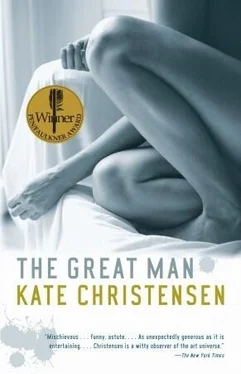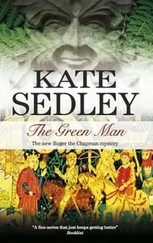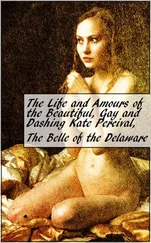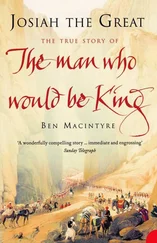“She brought a date,” said Henry.
“Pretend you’re Oscar for one night. Enjoy yourself, drink up, and get that look off your face like you’re about to pass out on the floor.”
“Fuck,” said Henry. He put his hand on Ralph’s shoulder to steady himself and finished his wine.
Ralph said, “Come on, let’s join the party.”
THE NEW YORK TIMES BOOK REVIEW, SEPTEMBER 16, 2007

Two Portraits of the Artist as a Bad Boy
OSCAR FELDMAN
A Life in Paint.
By Ralph Washington.
445 pp. W.W. Norton & Company. $34.95.
AN EYE FOR WOMEN
The Life of Oscar Feldman.
By Henry Burke.
398 pp. Yale University Press. $29.95.
By PENNY HIGHTOWER-JONES
WHENEVER two biographies of the same subject come out at roughly the same time, it goes without saying that it’s impossible not to read them comparatively. And when these biographies are as radically different in approach and tone as “Oscar Feldman” and “An Eye for Women,” a reviewer might be forgiven for having, as it were, a field day.
Biographical subjects don’t get much juicier than Oscar Feldman, who was a notorious womanizer and a figurative painter during the Abstract Expressionists’ ironclad rule of downtown New York. Born on the Lower East Side in 1923, the son of a Jewish butcher, a graduate of Brooklyn College, and a dropout from New York’s Art Students League, Oscar Feldman was a largely self-taught painter who disdained his contemporaries and separated himself from the New York School of painters. His only subject, his obsession in both life and work, was the female nude. “Women are the mystery of life,” he once wrote.
This lusty contrarian denied himself no pleasure he deemed worthy of pursuing, whether booze, sex, artistic success, or controversy. Where most men might have found one wife, household and set of offspring more than enough, Oscar Feldman managed to have two, simultaneously, for many decades: the Riverside Drive apartment owned by his wife, Abigail Feldman, mother of his autistic son, Ethan; and the house in Greenpoint, Brooklyn, owned by his mistress of more than forty years, Claire St. Cloud, familiarly known as “Teddy,” the mother of his illegitimate twin daughters, Ruby and Samantha, who bear the name Feldman. In addition, Feldman kept a studio on the Bowery, where he painted, and, by all accounts, bedded, a long succession of models.
“Oscar Feldman” and “An Eye for Women” both succeed well enough in terms of organizing Feldman’s daily life and integrating his work; Washington and Burke are both adept chroniclers and proficient, if workmanlike, writers, and both have a solid grasp of Mr. Feldman’s legacy as an artist.
Where the quality of the two books diverges, and where one can be said to succeed and the other to laboriously fail, is in capturing the magnificently selfish ebullience of Feldman’s life and relating this appetitive nature to his paintings. Where Mr. Burke is unsparing, almost gimlet-eyed, in his approach to Mr. Feldman’s excesses and peccadilloes, Mr. Washington seems to be blowing soap bubbles and air kisses at him.
For example, when broaching the topic of Lily McGovern Santangelo, the model for the 1988 portrait “Gina” (Feldman always gave his portraits a name other than the model’s in order, he said, to distinguish art from life), Mr. Burke writes, “Oscar took her to bed without a second thought, despite the fact that she was eighteen years old, a virgin, and at the time seriously contemplating becoming a Franciscan nun.
“‘I met him at my father’s birthday party and agreed to model for him because he completely bamboozled me,’” Burke quotes Mrs. Santangelo, now a devout Catholic housewife and mother of three in Rye, New York, as saying. “‘Somehow I could not say no to him. He was very forceful. I was ashamed for years about it. I said many prayers that my sin should be erased and that I could find it in my heart to forgive him.’”
Mr. Washington, on the other hand, apparently either declined to interview Mrs. Santangelo or decided to disregard her side of the story. He chooses instead to drop a rosy, almost romantic veil over his subject’s near rape of a girl young enough to be his granddaughter. He writes: “When the lovely, haunting portrait he called Gina was completed, having immortalized her in paint, Oscar took the girl to bed and deflowered her.”
Washington then quotes from Feldman’s daily journal on the subject (a passage one suspects was written with swaggering irony, although Washington presents the entry with a straight face): “‘She was like a newborn suckling fawn, still wet with amniotic fluid.’”
Burke and Washington have equally divergent approaches to the recent, highly publicized revelation that the “Helena” half of Mr. Feldman’s famous 1978 diptych, “Mercy and Helena,” which had hung for almost thirty years in a place no less illustrious than the Met, was in actuality painted by Mr. Feldman’s sister, Maxine, a well-known abstract painter in her own right, in order to win a bet: Each was to paint a work in the style of the other and pass it off as the other’s.
Mr. Burke writes, “After Maxine painted Helena and Oscar painted what Maxine later described as ‘a complete mess without a clue about abstraction,’ Oscar must have been forced to admit, if only privately to himself, that his sister was a far more technically accomplished painter than he was.”
He goes on to quote the model for “Helena,” the art historian Jane Fleming, who revealed that Maxine had painted it, as saying: “‘I thought it was long past time that the art world saw Maxine for the genius she is. The irony is that Oscar’s reputation hasn’t been tarnished at all; this just brought him more attention. Typical.’”
Mr. Washington, on the other hand, lamely and euphemistically writes, “The ensuing media storm served not only to deservedly enhance Maxine Feldman’s reputation as a painter but also to establish beyond a doubt that Oscar Feldman was too great an artist to be injured by the revelation that only one of his many, many paintings was not, after all, by him. If imitation can be said to be the sincerest form of flattery, then Helena stands as an ironic but undeniable testament to his greatness.”
If these two written portraits of Oscar Feldman were put on canvas and displayed side by side as a diptych, Burke’s would be bright, complex and bold. Burke treats Feldman with all due respect, but also with a light-handed, almost fraternal forbearance, as if his subject were an interesting, garrulous, self-revelatory specimen he’d met in a bar. His is a clear, honest, unsparing portrait of the kind of larger-than-life, amoral artist who seemingly doesn’t exist anymore: hard-drinking, prodigious, idiosyncratic, charismatic, possessing an intensely visceral gusto more than any other quality, be it genius, originality, or integrity.
Ralph Washington’s Oscar Feldman is executed in the primary colors of a Disney cartoon, didactically outlined and regularly featured, and finished with a good gloss of whitewash.
One thing the two biographers completely agree on, however, is that Oscar Feldman had either the good fortune or the good sense to be surrounded by women as interesting as he was. Abigail Feldman, the late Maxine Feldman, and Teddy St. Cloud emerge in both biographies as fascinating subjects in their own right, so fascinating that this female reviewer couldn’t help wishing Mr. Feldman had moved over and given his real-life women a little more room.
Читать дальше













